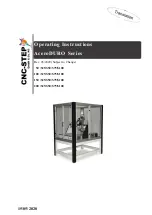
18.
Quality of Service
MN700004 Rev 01
216
impaired, since UDP does not use the "slow start" flow control mechanism that is used by
TCP.
Output Traffic Shaping
When congestion occurs, the packets are transmitted on the outgoing interface and the
assigned queues. Traffic shaping allows you to shape output traffic (egress traffic) on a per-
port basis and also per queue on the port. The output traffic is monitored to verify that it
conforms to the rate configured on the switch. When excessive traffic is detected on the
switch, the output interface applies the traffic shaping and controls the excess traffic. If the
switch queues overflow, the traffic is dropped.
Supported Standards, MIBs and RFCs
Standards
IEEE 802.1p Priority Queuing
MIBs
No MIBs are supported by this feature.
RFCs
RFC 2697,
A Single Rate Three Color Marker
RFC 2698, A Two Rate Three Color Marker
Default QoS Configuration
Table 18-1 shows the default QoS configuration.
Table 18-1 Default QoS Configuration
F e a t u r e
D e f a u l t
V a l u e
The queue to priority assignment
See table 18-2
The priority to queue assignment
See table 18-3
















































